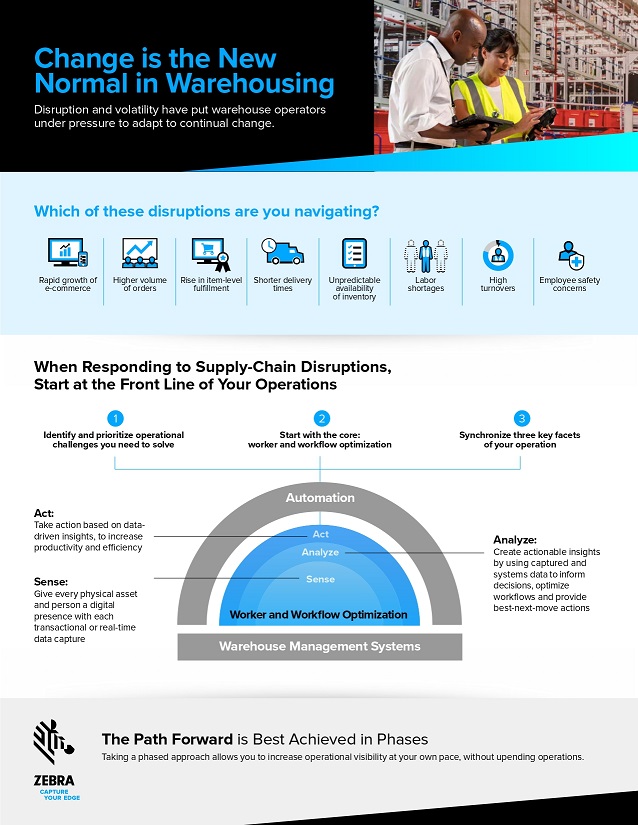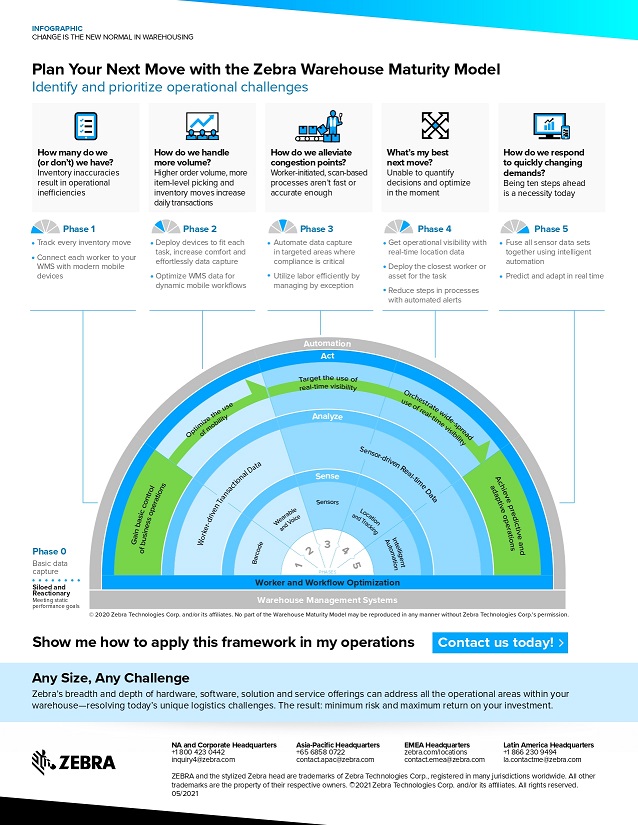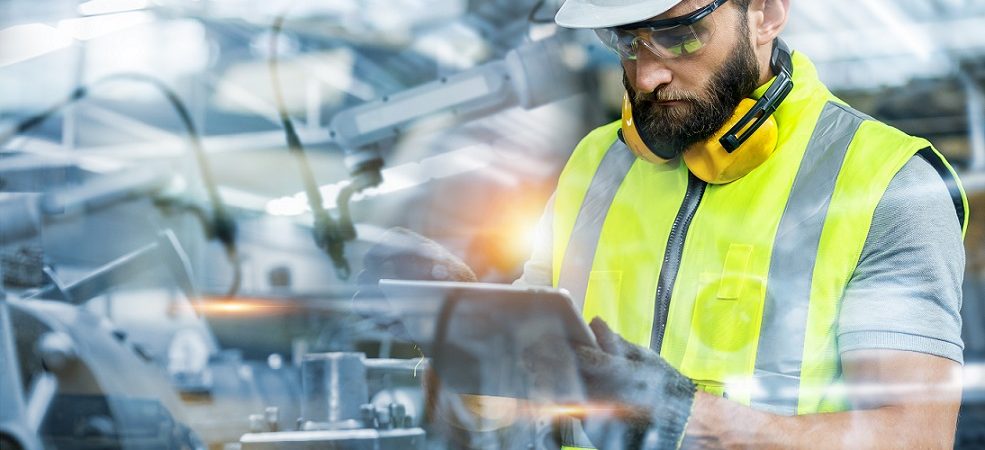Zebra Technologies presents an infographic showing a maturity model in five stages with the most basic one not taking advantage of information or connectivity and the last one providing automation and robotization of processes.
Perhaps silently and hastily, storehouses were among the first sectors to suffer the impact of the pandemic and were forced to change and improve their ability to respond to the growing demand for products and home shipments, given the conditions the lockdown generated in 2020 and extended throughout this year.
However, the experiences learned and the Digital Transformation achieved will not remain in the past.
According to Accenture, companies invested about US$11 billion annually in the automation of warehouses between 2015 and 2019.
But with the pandemic, the changes did not stop and the search for both operational and energy efficiency, as well as a greater demand in terms of positive user experience, will make the storage of products and merchandise improve impetuously.


Process automation, robotization, the use of vehicles and other autonomous devices, which are already used in large companies such as Amazon, are beginning to be part of the differential of companies and their competition, such as FedEx and DHL, among others, already utilizing fully robotic delivery equipment.
This leads us to ask ourselves how our warehouses should operate at the end of the decade and what steps must be taken to move towards a successful operation that boosts performance, sales and the overall productivity of the company.
Zebra Technologíes has developed an infographic in which we can understand how to take advantage and anticipate changes in the environment to take advantage of the Digital Transformation of stock and warehouses for merchandise and goods.
Maturity model
To achieve this, Zebra Technologíes proposes a maturity model that allows decision-makers to understand what stage they are in and how they should move towards the most advanced and efficient models.
In the basic or zero-phase there is a simple data collection whose purpose is isolated from the rest of the company’s operations. In phase one, of the Zebra model, there is connectivity between workers through mobile devices. In phase two, beyond the connectivity, comes the feeding of the data captured by the workers to understand and improve the procedures.
Phase three is more proactive and automates the capture of data, and phase four advances to total visibility of the operation and a simplification of the processes.
In phase five, the aggregation of intelligence and the fusion of all the information that the company permits allows the generation of forecasts and adaptations in real-time.
In this way, more competitive and increasingly efficient processes will be seen within the merchandise warehouses, which definitively abandon their passive role in commercial activity and increases their potential for the customer and income generation for the business.
Click below to share this article

